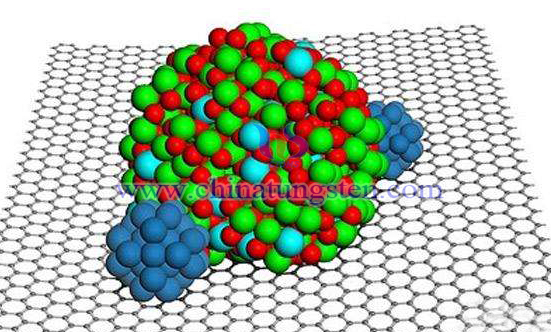Graphene-polyaniline-phosphotungstates Acid Composite Material
- Details
- Category: Tungsten Information
- Published on Wednesday, 05 June 2019 01:10
Phosphotungstate (H3PW12O40) is a kind of heteropolyacid polyoxometalate. Phosphotungstate is a well-developed positive electrode active material in heteropoly acid clusters due to its reversible multi-electron redox reaction. It can achieve a specific capacity of 260Ah/kg and excellent performance of rapid charge and discharge, and its capacity exceeds 150Ah/kg of the conventional Li2CoO2 lithium ion battery which has been commercialized.
Phosphotungstates have excellent electrochemical properties: reversible loss of one or more electrons while maintaining the structure. Because the heteropoly acid has such an electron transfer form, the poly-three-dimensional graphene-coated polyaniline-phosphoric acid microsphere composite material has excellent charge and discharge performance as an active material of the battery positive electrode material. However, lithium ions intercalate and deintercalate the microcrystalline structure of the heteropoly acid and the non-smooth electron transfer channel of the heteropoly acid, so that the conductivity of the pure heteropoly acid is poor, and the insulator is nearly insulative.

In order to solve the above problems, the researchers designed a graphene-polyaniline-phosphotungstates acid composite material, which is composed by self-assembling polyaniline and phosphotungstic acid into microspheres and then loading onto three-dimensional graphene, including the following steps:
1) Dissolve a certain amount of phosphotungstic acid in a mixed solution of water and concentrated sulfuric acid, add polyaniline for a period of time, stand still in an ice bath, and centrifuge to obtain polyaniline-tungstic acid microspheres;
2) The polyaniline/phosphoric acid microspheres are ultrasonically dispersed in a small amount of water to prepare an aqueous solution, which is then added to the aqueous graphene oxide solution, stirred uniformly, and then hydrothermally reacted. After the reaction is completed, the mixture is cooled to room temperature, and the solid agglomerate is taken out. And freeze-drying to obtain the three-dimensional graphene-aniline-tungstic acid composite material. This synthetic material can be used as a positive electrode material for lithium ion batteries.
Studies have shown that the three-dimensional graphene-polyaniline-phosphotungstates acid composite material not only solves the problem of difficulty in inserting and extracting lithium ion in the microcrystalline structure, but also greatly increases its conductivity, and has good cycle reversibility and stability. It is used as a positive electrode material for lithium ion batteries to improve the conductivity of heteropoly acid cluster cells.
- Tungsten Manufacturer & Supplier, Chinatungsten Online: www.chinatungsten.com
- Tungsten News & Prices of China Tungsten Industry Association: www.ctia.com.cn
- Molybdenum News & Price: news.molybdenum.com.cn
- Tel.: 86 592 5129696; Fax: 86 592 5129797; Email: sales@chinatungsten.com



 sales@chinatungsten.com
sales@chinatungsten.com